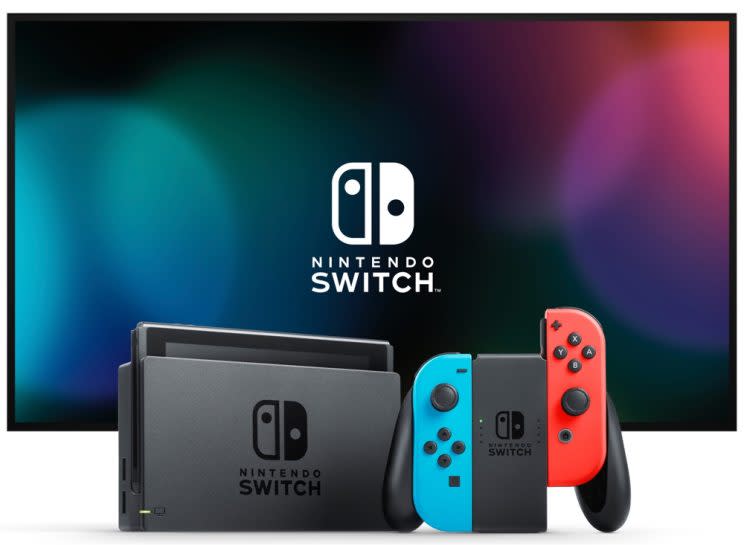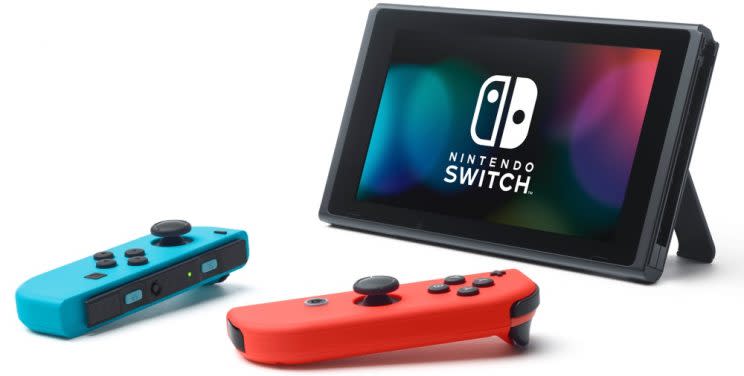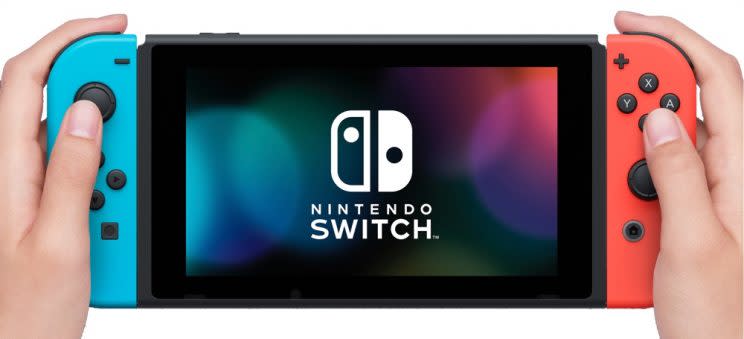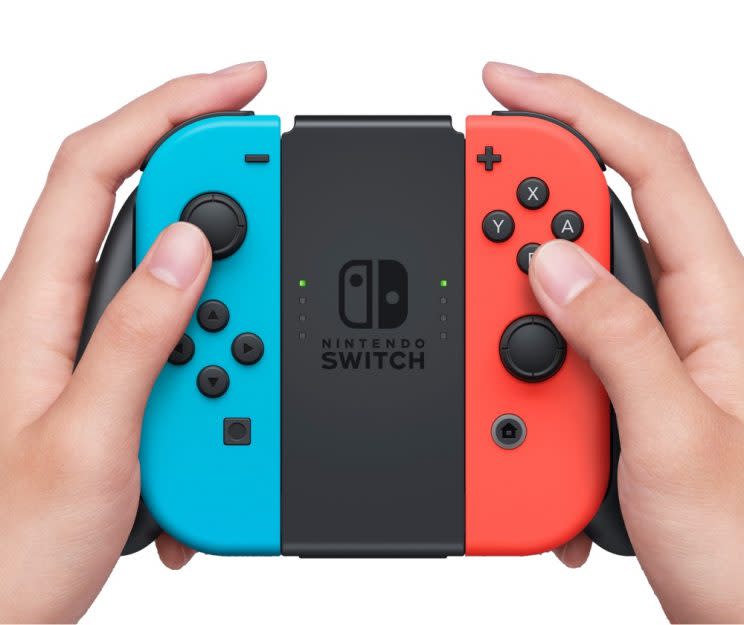Nintendo Switch hands-on: A portable system with potential
Nintendo’s (NTDOY, NTDOF) new Switch console hits the market on March 3. With less than two months to go before the big day, the “Mario” maker gave us a chance to go hands-on with the system and a handful of games, including the highly anticipated “The Legend of Zelda: Breath of the Wild.”
The biggest news about the $300 Switch, outside of the fact that it’s a new Nintendo console, is that it’s actually two systems in one.
There’s the traditional TV mode, which lets you play games on your couch with a tub of chips next to you, and a handheld mode, which lets you pop the Switch’s 6.2-inch tablet out of its dock and use the console on the go (perhaps to the market to buy more chips).
It’s an impressive system, but the Switch will live and die by its catalogue of third-party games, which still seems very much up in the air.
But let’s start with what makes the console unique. See, the brains of the Switch are all packed into that tablet. The dock is basically a means for it to connect to your television, power it, and charge its battery.

The console isn’t the only part of the Switch that features multiple modes. The system actually comes with two controllers: a left Joy-Con and a right Joy-Con, available in solid gray or blue and red. You can hold one controller in each hand to play games, or slide them into the included Grip for a more traditional gaming experience.
When you want to use the Switch in tablet mode, you simply slide the Joy-Cons onto the slate’s sides, turning the system into what is essentially a giant Game Boy. If you want to play a two-player game, you can hand one Joy-Con to your friend, while you use the other to go head-to-head.
I found the Grip controller mode to be as comfortable as a PlayStation 4 or Xbox One controllers. It’s substantial without feeling overweight. Using the Joy-Cons in tablet mode was similarly easy, though I can’t see many people holding the Switch up for too long. You’ll likely end up resting it on your lap after a while just as I did during my “Zelda” demo.
While I like the idea of using the Switch’s Joy-Cons as individual controllers for two-player games, they feel a bit too cramped for my adult-size hands. That probably won’t be the case for smaller gamers, but it’s worth noting if you’re old enough to have awkwardly slow-danced at your junior prom.

According to Nintendo, the Switch’s battery will last roughly two to six hours in tablet mode depending on the game you’re playing. In other words, if you’re playing a particularly resource intensive game like “Zelda,” don’t expect a marathon session on a cross-country flight unless your seat has a power outlet. Thankfully, the Switch uses a USB C connector, so you can plug in any compatible cable and charge the system without needing its dock.
Outside of the system itself, Nintendo is doing things a bit differently when it comes to software. The console has just 32GB of on-board storage, which is a ridiculously small amount of space when you consider that the base models of the PlayStation 4 and Xbox One get 500 GB.
If you’re going to download your games instead of purchase physical copies, which is no longer the norm for many players, you’ll have to be wary of how much space you have left on your system or expand by purchasing a separate microSDXC or microSDHC card.

Nintendo has also finally wised up about how it handles online play. The company will now charge players a monthly fee to access the Switch’s multiplayer service, just as Sony and Microsoft have done for years.
Of all of the games I played at the event, “Zelda” was the clear standout. In fact, “Zelda” seems like it will be the standout game for the Switch for a few months, as “Super Mario Odyssey,” the console’s first Mario game, doesn’t launch until December. The other exciting first-party game shown this week, “Splatoon 2,” looks fun but won’t likely sell very many systems.
Which brings us to what could be the Switch’s biggest problem: third-party games.
Nintendo has a long history of producing incredible first-party titles, but it never seems to be able to get the kind of big-budget third-party games that Sony and Microsoft can. There’s no “Call of Duty,” “Assassin’s Creed” or “Grand Theft Auto” for the Switch. Nintendo said it already has about 50 different third-party developers working on more than 80 games for the Switch, but so far we’ve only seen a few snippets of those titles and no gameplay.

One of the bigger games Nintendo is touting for the Switch is Bethesda’s “The Elder Scrolls V: Skyrim,” which is already five years old. You know something isn’t quite right when a five-year-old game is getting top billing for your new system.
Still, Nintendo could very well prove us wrong with the Switch and roll out a boatload of third-party titles in the latter half of 2017 that completely blow away any doubts about the system.
I’m also curious to see how deeply the Switch’s portability will eat into Nintendo’s 3DS handheld console sales. The company just launched its newest “Pokémon” titles in November to great success, so it’s not as if that system is dead in the water.
There are still a lot of unanswered questions about the Switch, which is to be expected. The Wii U, the company’s last console, was also its worst selling system ever. That said, there are plenty of bright spots to look to with the Switch. We’ll have more about the console in the coming months.
More from Dan:
Why Nintendo’s Switch console is crucial for the company’s future
Comcast: Out new app will make fixing your internet much less frustrating
Fitbit CEO: We’re trying to shift the way people perceive us
T-Mobile’s One ‘All In’ plan is killing hidden fees and giving cash back
Samsung unveils gaming notebooks and a partnership with Google
Carnival is turning its ships into floating connected hotels
Email Daniel at [email protected]; follow him on Twitter at @DanielHowley.
